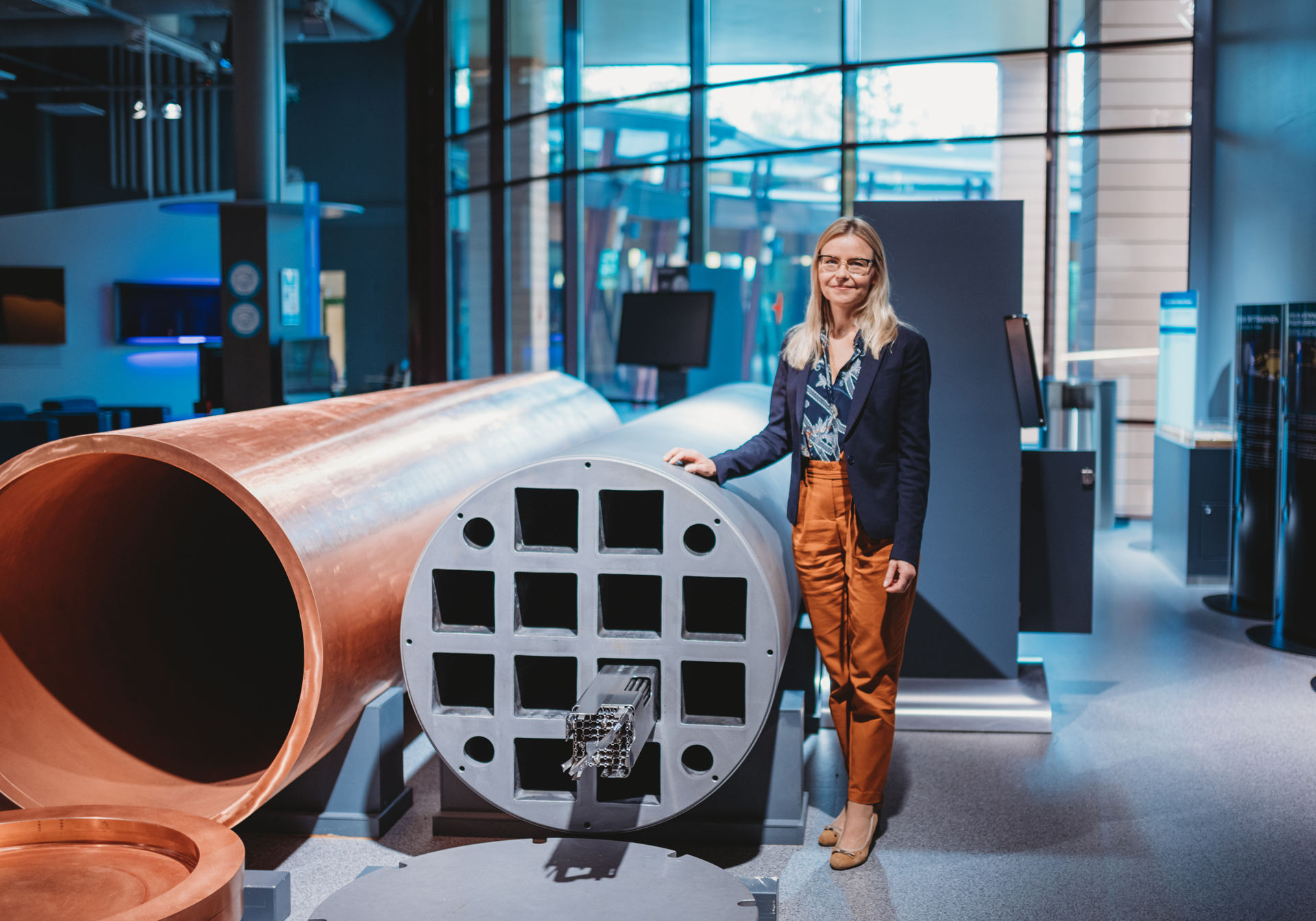Tiina Jalonen:
“The operating licence application encapsulates 40 years’ worth of research”
Posiva Oy’s work aiming at the final disposal of nuclear fuel is progressing on schedule. One big milestone was reached at the end of 2021, when the company submitted an operating licence application to the Ministry of Economic Affairs and Employment. It is a crystallisation of the research work carried out over 40 years to ensure safe final disposal. Posiva has previously been granted two decisions-in-principle and a construction licence.

The submitted operating licence application cannot be considered light evening reading. It contains a total of 364 pages of hard facts, and a huge amount of summarising to even get there. There has been quite a number of projects, studies and reports over more than four decades.
- The application itself refers to documentation, which in turn refers to background reports. If all of these were added together, the number of pages would be in the dozens of thousands, says Posiva’s Development Director Tiina Jalonen.
Posiva’s licence application may be lengthy, but its operations are also strictly long-term. The disposal facility is planned to be used until the 2120s. If we were to move in the other direction in time, the year would be 1920, i.e. long before the very introduction of nuclear energy.
Many, many fail-safes
Even though the 40 years spent on research work is a long time in human life, from the geological perspective, which plays an essential part in terms of the chosen final disposal solution, it is a drop in the ocean. A good point of comparison is provided by the Olkiluoto bedrock, which is one of the oldest in the world. It is approximately 1,800 million years old. In addition, the area is also the most studied by far in all of Finland in terms of its geological composition.
However, the solid bedrock 450 metres above the final disposal repository is only one of the fail-safes of the multiple barrier principle used by Posiva. In the same way, the composition of the canister selected for use and the entire disposal process with its equipment and facilities have been explained in the operating licence application. After all, long-term safety is the sum of many things.
Progress on schedule
Posiva’s licence aims at the final disposal of a total of 6,500 tonnes of uranium. This covers the spent fuel from all five of the nuclear power plant units in Finland. There is a lot to do, as a total of approximately 35 kilometres of deposition tunnels will be excavated. This too has picked up speed. Last summer, excavation was completed for the first five actual deposition tunnels, and around the same time, a drilling machine built for drilling deposition holes also arrived in Eurajoki.
Meanwhile overground, Skanska handed the encapsulation plant building over to Posiva at the end of May. Since then, there have been several equipment installations on the work list.
- We have kept on schedule both above and below the ground, confirms Tiina Jalonen.
Cooperation is key
Jalonen admits that submitting the operating licence application is a big step for the company.
“With the submission of the operating licence application, we can say that we have a solution, which is absolutely central to the future of the entire industry and is the main argument of the opponents of nuclear power.”
Posiva estimates that the actual final disposal could begin in the middle of the current decade. According to Jalonen, the fact that Olkiluoto is the first in the world to launch final disposal is due not only the excellence of the people at Posiva.
- High-level scientific expertise can also be found in other countries, she points out and passes on the praise.
-We in Finland have had the ability to think about the overall benefit to society, Jalonen says. The willingness to implement a final disposal solution has also been strong, and it has been found on all sides.
- Whether it’s the ministry, the Radiation and Nuclear Safety Authority or the owner, each party has wanted to promote this and not to throw a spanner in the works. It is clear that without this constructive way of working, everything would have been much more laborious.
The Ministry of Economic Affairs and Employment has announced that it will receive statements on the operating licence application, and the Radiation and Nuclear Safety Authority says that it has started preparing a safety assessment. The application will likely be considered by the Finnish government in late 2023.
More than 20 years’ experience with Posiva
Tiina Jalonen made her debut at Posiva in 2001. At that time, she started work as development manager. The element known as copper plays a big role in the fact that Jalonen ended up in the nuclear industry. Since the metal in question had been chosen as the material for the final disposal canister, the metallurgist, who graduated from the University of Oulu with a degree in process engineering, was offered a unique job. The same material had become familiar to her in her working life earlier at Outokumpu at Pori Copper (currently Luvata).
Tiina Jalonen has been in her current position since 2013. At that time, Posiva’s organisation was revamped. When the previously separate Research and Technology departments were merged, a Development department was created, which Jalonen took over. She has therefore been able to observe Posiva’s activities from an excellent vantage point.
Text: Ville Kulmala
Images: Natalie Kylliäinen
Share